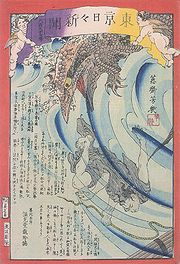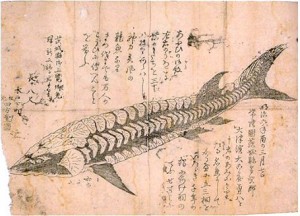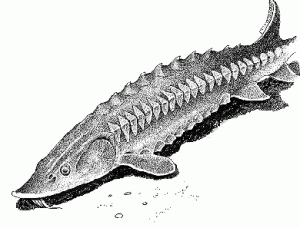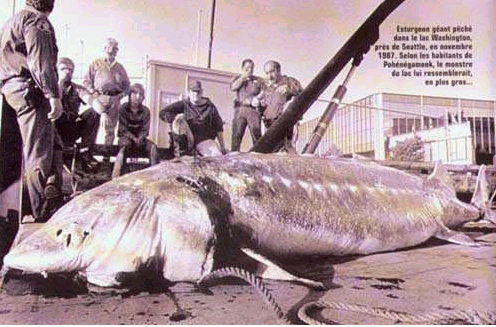Japanese Giant Fish, Part 2 – The Dragon Fish
Posted by: mystery_man on May 31st, 2010
The Dragon Fish
By- Brent Swancer
The Dragon Fish, also known in Japanese as the Ryuu Gyo, is a large, mysterious fish with a reptilian appearance that was reported frequently during Japan’s Meiji period (1868 to 1912). The fish is known almost entirely from accounts during this historical period. Eyewitnesses and news reports of the time describe a fish covered in bony plates and looking somewhat crocodilian in appearance.
One report from 1873 occurred in present day Ibaraki prefecture, Honshu, where a strange fish covered in scaly “armor” was caught by locals. The bizarre creature was said to be 2.4 meters (8 feet) long. This story was widely reported about in the news of the time.
Another account dates from 1875 and occurred in the Watarai province of Honshu, which is now known as Mie prefecture. Witnesses described capturing a huge, bizarre looking fish that was 3 meters (10 feet) in length. The fish was covered with strange, bony protrusions and was said to look similar to an alligator or crocodile.
Many reports of Dragon Fish mirrored the details of prominent scales, armor, and a generally reptilian appearance, although all of the sightings described the creatures as being fish. A rather dramatic artistic rendering of the creature at the time depicts it as being sort of a half-fish, half-dragon monstrosity.
From these descriptions and one particular artistic depiction of the time, it seems almost certain that the Dragon Fish were sturgeons of some type. The prehistoric, armored appearance and flattened head of a sturgeon could very well be described as something crocodilian in nature, and these fish can reach sizes consistent with the reports of Dragon Fish.
The problem is that sturgeons aren’t known to inhabit Honshu, where these reports originated. The only native species of sturgeon in Japan are found on the northern island of Hokkaido, where they are thought to be possibly extinct. The only record of a wild sturgeon in Honshu is a single wayward specimen captured in Sagami Bay, Kanagawa prefecture.
It is possible that the Dragon Fish represent a new type of undocumented sturgeon that occurs over a wider range in Japan. It could also be that sturgeon from Hokkaido made their way southward out of their normal range. In addition to the Sagami Bay specimen, species of sturgeon native to Russia and previously unknown in Japan have been captured in Hokkaido in the past, suggesting these fish may wander quite far from their native range.
It could also be that the fish were introduced from elsewhere. The Meiji Period, when these sightings were prominent, saw a rapid drive towards modernization and the adoption of Western technologies and practices in Japan. There was consequently a good deal of experimenting with foreign aquaculture techniques and fish introductions of various kinds during this time, mostly as a food source. Many of the populations of exotic fish stocked in lakes throughout Japan were originally established during this period. Perhaps at some point large sturgeon were also stocked in some areas as a possible commodity and food source.
There is even the remote possibility that, like the descriptions imply, the Dragon Fish were actual out of place crocodilians of some kind that were being seen.
About mystery_man













With the bony plates and crocodilian description, as well as no modern sightings, I would compare the Ryuu Gyo to the Buru of India. That’s the first thing that came to mind for me.